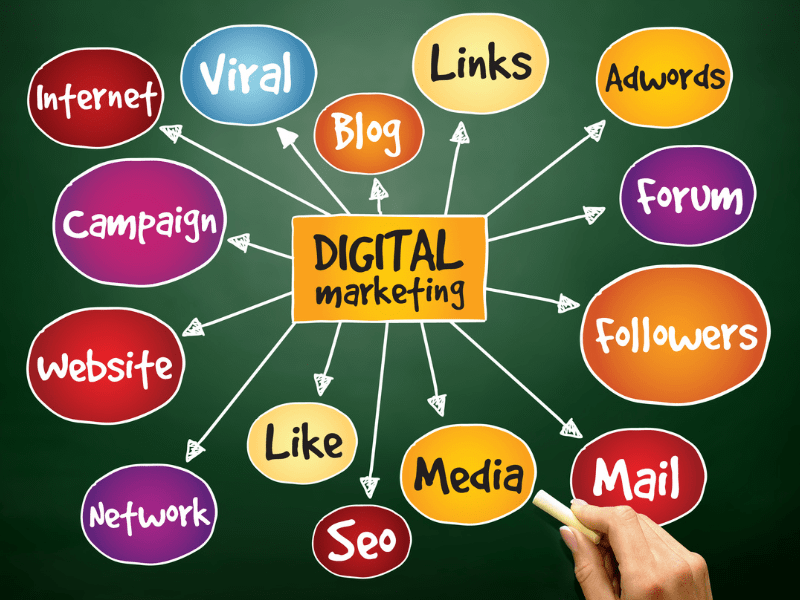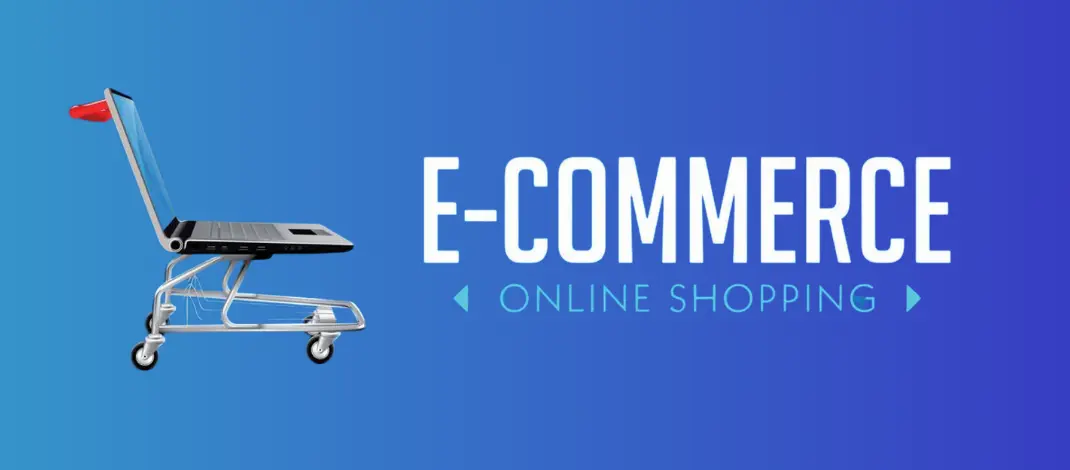e-commerce marketing and e commerce marketing automation play crucial roles in streamlining processes, increasing efficiency, delivering personalized experiences, and driving business growth in the highly competitive world of online retail.
What is E-commerce bussiness?

Ecommerce, short for electronic commerce, refers to the buying and selling of goods and services over the Internet. It involves the online transaction of products, services, or information between buyers and sellers. Ecommerce has revolutionized the way businesses operate by eliminating geographical barriers and providing convenience to both consumers and businesses.
In ecommerce, transactions are conducted through various online platforms such as websites, mobile apps, or social media platforms. Customers can browse through a wide range of products or services, compare prices, make purchases securely using online payment methods, and have their orders delivered to their doorstep.
Customized E-commerce
When it comes to building an e-commerce website, customization plays a crucial role in creating a unique and tailored online shopping experience for customers. Customizing e-commerce development allows businesses to align their website with their brand identity, showcase their products or services effectively, and provide a seamless user interface.
One of the key benefits of customizing e-commerce development is the ability to design and optimize the website according to specific business requirements. This includes incorporating personalized features such as product filters, search functionality, shopping carts, and payment gateways that are tailored to meet the needs of both the business and its target audience.
Furthermore, customization enables businesses to create visually appealing designs that reflect their brand image. By incorporating unique color schemes, fonts, layouts, and graphics into the website’s design, businesses can establish a strong online presence that resonates with their customers.
Additionally, customizing e-commerce development allows for flexibility in terms of scalability and integration with third-party tools or platforms. This ensures that businesses can adapt and expand as they grow without compromising on functionality or user experience.
In conclusion, customizing e-commerce development is essential for businesses looking to create an engaging online shopping experience. By tailoring the website according to specific requirements and brand identity, businesses can enhance customer satisfaction and drive sales in today’s competitive digital landscape.
Types of E-commerce

Ecommerce encompasses different types of transactions including business-to-consumer (B2C), business-to-business (B2B), consumer-to-consumer (C2C), and even government-to-consumer (G2C) interactions. It has become an integral part of our daily lives with the rise of online marketplaces like Amazon, eBay, Alibaba, and platforms like Shopify that enable individuals and businesses to set up their own online stores.
The growth of ecommerce has been fueled by factors such as increasing internet penetration worldwide, advancements in technology facilitating secure transactions and logistics management, as well as changing consumer preferences towards convenience and accessibility. As a result, ecommerce has transformed industries across various sectors including retail, travel and hospitality, entertainment, healthcare, education, and more.
Overall, e-commerce provides a convenient way for businesses to reach a wider customer base beyond traditional brick-and-mortar stores while offering consumers greater flexibility in terms of product choices and shopping experiences.
E-commerce advertising

When it comes to advertising for ecommerce, there are several effective ways to reach and engage with your target audience. By conducting thorough research on your customers, you can tailor your ads to their specific needs and preferences, increasing the chances of conversion and driving sales.
One way to advertise is through targeted online ads. Platforms like Google Ads and social media platforms offer robust targeting options that allow you to reach users based on demographics, interests, and behaviors. This ensures that your ads are shown to the right people who are more likely to be interested in your products.
Another effective way is through retargeting ads. These ads target users who have previously visited your website or engaged with your brand but didn’t make a purchase. By reminding them of their interest in your products or offering them exclusive discounts, you can encourage them to return and complete the purchase.
In addition, influencer marketing has become increasingly popular in ecommerce advertising. Collaborating with influencers within your niche allows you to tap into their established audience base and leverage their credibility and trust. This can significantly increase brand awareness and drive traffic to your ecommerce store.
Lastly, don’t underestimate the power of customer reviews and testimonials in influencing purchasing decisions. Incorporate user-generated content into your ads by showcasing positive reviews or testimonials from satisfied customers. This helps build trust with potential buyers and encourages them to make a purchase.
By utilizing these various methods of advertising for ecommerce while keeping a keen eye on customer research, you can effectively connect with potential customers, drive traffic to your store, and ultimately boost sales.
To supercharge your e-commerce business, it’s essential to focus on two key areas: optimizing your products and services, and leveraging the power of social media marketing.
Firstly, when it comes to products and services, it’s crucial to ensure that you offer high-quality offerings that meet the needs and desires of your target audience. Conduct market research to identify popular trends and gaps in the market, and then tailor your product range accordingly. Additionally, invest in product photography and detailed descriptions to showcase the value of your offerings.
Secondly, social media marketing can be a game-changer for e-commerce businesses. Establish a strong presence on platforms such as Facebook, Instagram, Twitter, or Pinterest – depending on where your target audience is most active. Create engaging content that showcases your products or services in an appealing way. Utilize features like shoppable posts or ads to drive traffic directly to your website.
Furthermore, consider collaborating with influencers or running social media contests to increase brand awareness and reach a wider audience. Regularly analyze your social media metrics to understand what content resonates best with your audience and adjust your strategy accordingly.
By combining a strong product/service offering with effective social media marketing strategies, you can supercharge your e-commerce business and drive increased sales and customer engagement.
To supercharge your e-commerce business, there are several tactics that you can implement instantly. These tactics are designed to boost your online sales, improve customer engagement, and increase overall profitability. By implementing these strategies, you can take your e-commerce business to the next level.
One tactic to instantly supercharge your e-commerce is to optimize your website for conversions. This involves improving the user experience, streamlining the checkout process, and ensuring that your website is mobile-friendly. By making it easy for customers to navigate and purchase from your site, you can significantly increase conversion rates.
Another tactic is to leverage social media platforms effectively. Utilize platforms such as Facebook, Instagram, and Twitter to promote your products or services and engage with potential customers. Social media advertising can be a powerful tool for driving traffic to your website and increasing brand awareness.
Additionally, implementing a personalized marketing strategy can have a significant impact on boosting sales. Utilize customer data and segmentation techniques to deliver targeted messages and offers that resonate with individual customers. Personalization creates a more tailored shopping experience, leading to increased conversion rates and customer loyalty.
Furthermore, consider implementing upselling and cross-selling techniques on your website. By suggesting complementary products or offering upgrades during the checkout process, you can encourage customers to spend more money on each transaction.
Lastly, don’t underestimate the power of customer reviews and testimonials. Encourage satisfied customers to leave reviews on your website or third-party review platforms. Positive reviews build trust with potential customers and can significantly influence their purchasing decisions.
By implementing these tactics into your e-commerce strategy, you can instantly supercharge your business by driving more traffic, increasing conversion rates, and ultimately boosting sales revenue.
E-commerce Marketing Tactics

In the world of ecommerce, marketing plays a crucial role in driving traffic, increasing brand awareness, and ultimately boosting sales. To effectively promote products and engage with customers, businesses utilize various e-commerce marketing channels and strategies.
Email marketing is one of the most effective channels for ecommerce businesses. It allows companies to directly communicate with their customers, share personalized offers and promotions, and build long-term relationships. By leveraging email automation tools, businesses can send targeted emails based on customer behavior and preferences.
Search engine optimization (SEO) is another essential aspect of e-commerce marketing. By optimizing website content, meta tags, and product descriptions with relevant keywords, businesses can improve their search engine rankings and attract organic traffic. This helps increase visibility in search results and drive more potential customers to their online stores.
Search engine marketing (SEM) complements SEO efforts by utilizing paid advertising to reach a wider audience. With platforms like Google Ads or Bing Ads, e-commerce businesses can bid on relevant keywords to display targeted ads at the top of search engine results pages. This enables them to quickly drive traffic to their websites and increase conversions.
A well-rounded e-commerce marketing strategy combines multiple channels such as email marketing, SEO, SEM, social media advertising, content marketing, influencer collaborations, and more. By diversifying their efforts across various platforms and tactics, businesses can maximize their reach and engagement with potential customers.
Overall, successful e-commerce marketing requires a strategic approach that leverages different channels based on the target audience’s preferences and behaviors. By staying up-to-date with industry trends and continuously optimizing campaigns for better results, businesses can effectively promote their products in the competitive online marketplace.
E-commerce customer buying journey

E-commerce marketing plays a crucial role in shaping the customer buying journey and creating positive experiences for online shoppers. It involves various strategies and techniques aimed at attracting, engaging, and converting potential customers into loyal buyers.
The customer buying journey in ecommerce typically consists of several stages: awareness, consideration, decision-making, and post-purchase. Each stage presents unique opportunities for marketers to influence consumer behavior and provide a seamless experience.
During the awareness stage, effective e-commerce marketing focuses on creating brand visibility through targeted advertising, search engine optimization (SEO), content marketing, social media campaigns, and influencer collaborations. By reaching out to potential customers with compelling messaging and relevant content, businesses can capture their attention and introduce them to their products or services.
In the consideration stage, marketers aim to educate consumers about the value proposition of their offerings. This can be achieved through detailed product descriptions, user-generated reviews and testimonials, comparison charts, or videos showcasing product features and benefits. The goal is to build trust with the customers by providing them with all the information they need to make an informed purchasing decision.
When it comes to the decision-making stage, e-commerce marketing efforts focus on removing any barriers that may hinder a customer from completing a purchase. This involves optimizing website usability and navigation for a seamless browsing experience, offering secure payment options, and providing clear shipping information and return policies. Additionally, personalized recommendations based on previous browsing or purchase history can help guide customers toward making a final decision.
Lastly, post-purchase experiences are equally important in e-commerce marketing as they contribute to customer satisfaction and loyalty. This includes order confirmation emails with tracking details, timely delivery of products or services as promised by the business, and proactive customer support for any queries or concerns that may arise after purchase.
Overall, effective e-commerce marketing ensures that each touchpoint along the customer buying journey is optimized to deliver positive experiences that drive conversions, and repeat purchases, and ultimately foster long-term relationships between businesses and their customers.
E commerce challanges
The world of ecommerce presents numerous challenges for businesses operating in this space. These challenges can significantly impact the success and growth of an ecommerce business. In this section, we will explore some of the major challenges that ecommerce businesses face today.
One of the biggest challenges in ecommerce is intense competition. With low barriers to entry, more and more businesses are entering the online marketplace, creating a highly saturated and competitive environment. This makes it crucial for ecommerce businesses to differentiate themselves from their competitors through unique value propositions, superior customer service, and innovative marketing strategies.
Another significant challenge is building trust with customers. Unlike traditional brick-and-mortar stores where customers can physically see and touch products before making a purchase, online shoppers rely solely on product descriptions, images, and reviews. Ecommerce businesses need to invest in building a trustworthy brand image by providing accurate product information, secure payment options, transparent return policies, and excellent customer support.
Logistics and fulfillment pose another set of challenges for ecommerce businesses. Efficient inventory management, order processing, packaging, shipping logistics, and timely delivery are essential factors that directly impact customer satisfaction. Ecommerce businesses need to optimize their supply chain processes to ensure smooth operations while minimizing costs.
Cybersecurity is also a significant concern in the world of ecommerce. With increasing instances of data breaches and online fraud, protecting customer information has become paramount for any online business. Ecommerce companies must invest in robust security measures such as secure payment gateways, SSL certificates, encryption technologies, and regular vulnerability assessments to safeguard sensitive customer data.
Lastly, keeping up with evolving technology trends is an ongoing challenge for ecommerce businesses. As technology continues to advance rapidly with innovations like mobile commerce (m-commerce), artificial intelligence (AI), virtual reality (VR), augmented reality (AR), voice search optimization (VSO), etc., staying ahead requires continuous adaptation and investment in new technologies that enhance user experience and drive sales.
In conclusion, while there are numerous challenges in the ecommerce industry, businesses that can effectively address these challenges and adapt to the evolving landscape have the potential to thrive in this highly competitive market.
Cart abandonment challenge
Cart abandonment is a common challenge faced by ecommerce businesses. It refers to the situation where a customer adds items to their shopping cart but leaves the website without completing the purchase. This can result in lost sales and revenue for online retailers.
To combat cart abandonment, businesses employ various strategies to encourage customers to complete their purchases. One effective strategy is implementing automated email campaigns. These campaigns are triggered when a customer abandons their cart and sends them personalized reminders or incentives to entice them back to complete the purchase.
Another strategy is offering discounts or promotions specifically targeted at customers who have abandoned their carts. By providing an incentive such as free shipping or a percentage off their total order, businesses can increase the likelihood of customers returning to complete their purchase.
Additionally, optimizing the checkout process can help reduce cart abandonment rates. Simplifying the steps required for checkout, offering guest checkout options, and ensuring that payment methods are convenient and secure can all contribute to a smoother purchasing experience for customers.
Furthermore, retargeting ads can be employed to remind customers about items they left in their cart while they browse other websites or social media platforms. These ads serve as gentle reminders and can help re-engage potential buyers.
By implementing these strategies and continuously analyzing data on cart abandonment rates, ecommerce businesses can effectively reduce cart abandonment and improve overall conversion rates on their websites.
E-commerce payment

In the world of e-commerce, payment methods play a crucial role in facilitating seamless transactions between buyers and sellers. With the rise of online shopping, consumers are presented with various options when it comes to making payments for their purchases.
One of the most common payment methods used in e-commerce is credit or debit cards. This method allows customers to securely enter their card details during checkout and complete the transaction with just a few clicks. It offers convenience and ease of use, making it a popular choice for both customers and businesses.
Another popular payment method is digital wallets or mobile payment apps. These platforms allow users to store their card information securely and make payments by simply scanning a QR code or entering a PIN. Digital wallets have gained significant traction due to their convenience, speed, and added security features.
Additionally, alternative payment methods such as bank transfers, prepaid cards, and cryptocurrency are also gaining popularity in the e-commerce landscape. These options provide customers with more choices based on their preferences and specific needs.
It is important for businesses to offer multiple payment methods to cater to diverse customer preferences. By doing so, they can enhance the overall shopping experience and increase conversion rates.
In conclusion, e-commerce payments have evolved significantly over the years with the advent of new technologies. Offering a variety of secure and convenient payment methods ensures that businesses can meet customer expectations while driving growth in online sales.
E commerce marketing automation
By implementing e commerce marketing automation tools, businesses can automate various aspects of their marketing campaigns, such as email marketing, social media advertising, customer segmentation, and personalized product recommendations. These tools utilize advanced algorithms and machine learning to analyze customer data and behavior, allowing businesses to deliver targeted and relevant content to their audience.
One of the key benefits of e commerce marketing automation is its ability to save time and resources for businesses. Instead of manually executing repetitive tasks, such as sending out promotional emails or managing social media posts, automation tools can handle these processes automatically. This frees up valuable time for marketers to focus on other strategic initiatives that drive business growth.
Moreover, e commerce marketing automation enables businesses to create personalized experiences for their customers. By leveraging customer data and preferences, businesses can send tailored messages and offers that resonate with individual shoppers. This level of personalization not only enhances the customer experience but also increases conversion rates and customer loyalty.
Furthermore, e commerce marketing automation allows businesses to track and measure the effectiveness of their campaigns in real time. Through analytics dashboards and reporting features offered by these tools, marketers can gain insights into key metrics such as open rates, click-through rates, conversion rates, and revenue generated. This data-driven approach helps businesses make informed decisions about their marketing strategies and optimize their campaigns for better results.
We hope you enjoyed reading this blog post, and we’d love for you to stay connected with us on social media. Follow us on Facebook, Instagram, X, and LinkedIn for more great content!
If you want to get the latest updates from us in real-time, don’t forget to subscribe to our Newsletter – we’re always working hard to provide readers like you with the best content possible. So don’t miss out!




